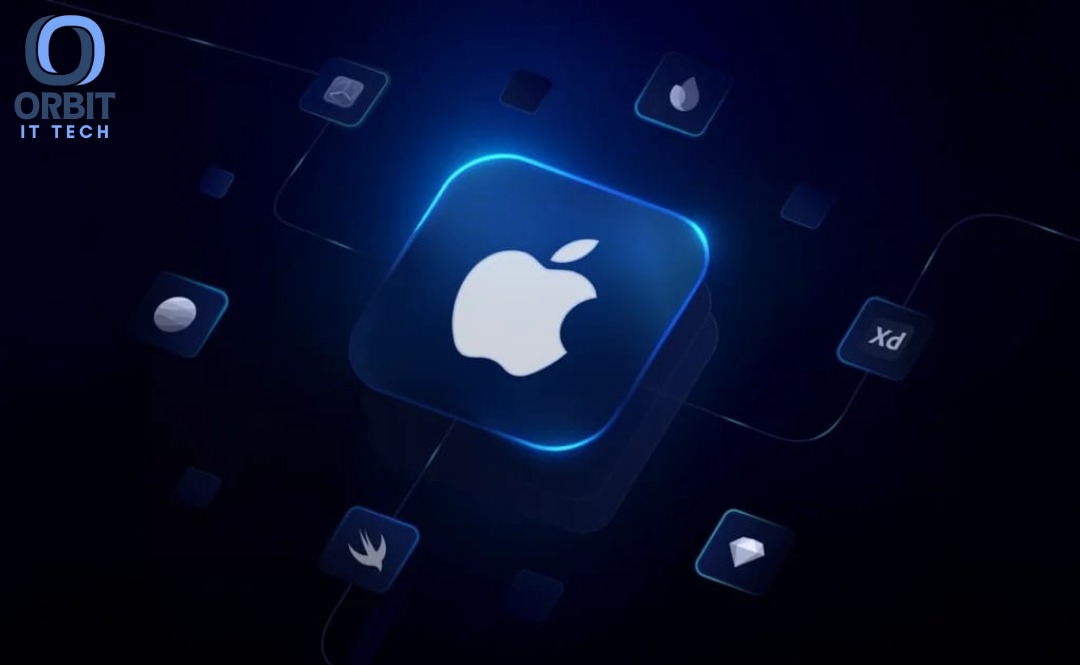Java, one of the most widely-used programming languages in the world, has been at the heart of the software development ecosystem for decades. From building mobile applications to large-scale enterprise systems, Java’s versatility, stability, and cross-platform compatibility make it an ideal choice for businesses looking to create innovative software solutions. But how exactly can Java app development transform your software solutions?
In this article, we will explore how Java app development can enhance software solutions, the advantages it offers, the best practices for developers, and how to leverage its power for modern applications. We’ll also dive into frequently asked questions (FAQs) to clear up any doubts and provide actionable insights for businesses and developers alike.
Key Takeaways
- Platform Independence: Java’s ability to run on any platform with the JVM makes it a versatile choice for multi-platform development.
- Security: With robust security features, Java ensures that your applications are safe from vulnerabilities.
- Scalability: Java’s performance improvements and scalability make it ideal for both small and enterprise-level applications.
- Rich Ecosystem: Java’s extensive libraries and frameworks help developers reduce development time and build powerful applications.
- Cloud and Microservices: Java is highly compatible with cloud computing, microservices, and containerization, making it future-ready.
1. The Evolution of Java: A Cornerstone of Software Development

Before we dive into how Java app development can transform software solutions, it’s important to understand Java’s history and why it continues to be a dominant language in the software industry.
Java was first developed by Sun Microsystems (now owned by Oracle) in 1995 as a platform-independent programming language designed to run on any device, regardless of the underlying operating system. With its core principles of Write Once, Run Anywhere (WORA), Java revolutionized how applications were built and deployed across multiple platforms.
Java’s Object-Oriented Programming (OOP) features such as encapsulation, inheritance, and polymorphism made it easier to develop robust, scalable, and maintainable software applications. Over the years, Java’s popularity has only grown, with an extensive community of developers, libraries, frameworks, and tools contributing to its ecosystem.
2. The Power of Java in Modern Software Solutions
Java’s ability to develop software solutions across multiple platforms—desktop, web, mobile, and embedded systems—makes it an essential technology for modern development. Let’s examine how Java app development can transform software solutions in more detail.
a. Platform Independence
One of Java’s most significant advantages is its platform independence. Java programs are compiled into bytecode, which can run on any system with a compatible Java Virtual Machine (JVM). This means that software applications built in Java can easily be deployed across a wide range of devices, from desktops to servers and mobile devices, without requiring significant changes.
This Write Once, Run Anywhere (WORA) capability is crucial for businesses looking to create applications that can reach a global audience, irrespective of the underlying platform or operating system.
b. Scalability and Performance
Scalability is a key factor when building enterprise-level applications. Java’s performance has drastically improved over the years, thanks to continuous improvements in the JVM and garbage collection mechanisms. For large applications handling millions of transactions per second, Java’s multithreading capabilities allow for concurrent processing, which can improve performance and reduce bottlenecks.
Java is used extensively in industries like finance, e-commerce, telecommunications, and healthcare, where high-performance and scalable applications are essential for success.

c. Security Features
Java has long been known for its security features, which are essential in today’s threat-prone world. The JVM provides a controlled execution environment, preventing malicious code from affecting the system or gaining unauthorized access to resources.
Java’s security manager, bytecode verifier, and extensive libraries for encryption, secure communication, and authentication mechanisms ensure that applications built in Java are resistant to common threats such as data breaches, cross-site scripting (XSS), and SQL injection.
d. Robust Frameworks and Libraries
Java offers a wealth of open-source frameworks and libraries that simplify app development and reduce time-to-market. Some of the most popular Java frameworks include:
- Spring Framework: Known for its versatility and dependency injection capabilities, Spring simplifies the development of enterprise-grade applications, web services, and microservices.
- Hibernate: This object-relational mapping (ORM) tool simplifies database interactions, reducing the complexity of database management and improving performance.
- JavaFX: A framework for building rich desktop applications with a modern user interface (UI).
- Apache Struts: A framework for creating scalable and maintainable web applications.
These frameworks not only reduce development time but also offer proven design patterns that help developers build efficient, maintainable, and secure applications.
e. Cross-Platform Mobile Development
With the rise of smartphones, Java has also found a significant role in mobile app development. Through Android development, Java has become the primary language for building Android applications. Java’s ability to run on Android’s Java Virtual Machine (Dalvik/ART) makes it the go-to language for Android developers.
Although Kotlin is now the preferred language for Android development, Java remains widely used, particularly for legacy applications and existing Android projects. Java’s cross-platform capability also means that applications developed in Java can seamlessly integrate with Android-based devices, providing a consistent experience across various platforms.
f. Cloud Computing and Microservices
Java’s rich ecosystem also plays a significant role in cloud computing and microservices development. With the shift toward distributed architectures and containerization, Java’s compatibility with platforms like Docker and Kubernetes has made it a top choice for building microservices.
Furthermore, Java is commonly used to develop cloud-based applications on platforms like Amazon Web Services (AWS), Microsoft Azure, and Google Cloud, where scalability, reliability, and performance are paramount.
3. How Java Can Transform Your Business’s Software Solutions
Java app development can have a profound impact on businesses in various ways, from enhancing software performance to enabling a better user experience. Here’s how:
a. Accelerated Time-to-Market
By leveraging Java’s extensive libraries, frameworks, and tools, developers can speed up the development process. Java’s large ecosystem of ready-made solutions means that businesses don’t have to reinvent the wheel. Whether it’s authentication, data processing, or UI design, Java offers robust libraries to integrate these functionalities quickly and efficiently.
This reduction in development time means that businesses can get their products to market faster, providing them with a competitive edge.
b. Increased Flexibility and Innovation

Java’s flexibility allows developers to explore different paradigms and architectures to meet business requirements. From traditional monolithic applications to modern microservices and serverless architectures, Java can accommodate a variety of development approaches.
For businesses looking to innovate, Java’s adaptability supports rapid experimentation with new ideas without the need for a complete rewrite of the application. Whether it’s integrating AI, IoT, or blockchain, Java’s compatibility with cutting-edge technologies makes it an ideal choice for innovation-driven businesses.
c. Cost-Efficiency
Java’s ability to build cross-platform applications significantly reduces the need for maintaining separate codebases for different platforms. This can reduce development costs, especially for businesses targeting multiple platforms, including web, mobile, and desktop.
Additionally, Java’s high performance means that businesses can build applications that scale efficiently without requiring massive infrastructure investments, resulting in long-term cost savings.
d. Enhanced User Experience
Java’s rich ecosystem for building user interfaces—whether for desktop apps using JavaFX or web applications using Spring Boot—empowers businesses to deliver smooth, responsive, and feature-rich user experiences. By building Java-based solutions, companies can ensure a seamless experience for their users across different devices and operating systems.
4. FAQs on Java App Development
Q1: Why is Java still so popular for app development?
Java remains popular because of its platform independence, security features, scalability, and the vast ecosystem of libraries and frameworks. Its ability to run on almost any platform, combined with its robust performance and extensive support for modern development paradigms, makes it a top choice for developers worldwide.
Q2: Is Java the best language for mobile app development?
Java is one of the most widely-used languages for Android mobile app development. However, with the rise of Kotlin, Java has taken a backseat as the primary language for new Android apps. That said, Java remains a strong choice for legacy Android apps and is still widely supported in the Android development community.
Q3: How long does it take to develop a Java app?
The time required to develop a Java app depends on the complexity of the application, the project requirements, and the developer’s experience. Simple applications can be built in a few weeks, while complex enterprise systems or mobile applications may take several months or longer.
Q4: Can Java be used for both front-end and back-end development?
Yes, Java is primarily used for back-end development, but JavaFX can be used for building front-end desktop applications. Java is also commonly used in full-stack development with frameworks like Spring for the back end and JavaScript or other front-end Technologies for the user interface.
Q5: What are the main advantages of Java over other programming languages?
Java’s main advantages over other languages include platform independence, strong security features, a vast ecosystem, excellent community support, and its ability to scale for enterprise applications. It’s also known for its reliability and performance, which are essential in business-critical applications.
Q6: Is Java good for cloud app development?
Yes, Java is well-suited for cloud app development. With its rich set of frameworks like Spring Boot and its compatibility with cloud platforms like AWS, Google Cloud, and Azure, Java is a great choice for building scalable, high-performance cloud applications.
Q7: Is Java a good choice for enterprise-level applications?
Absolutely. Java is one of the best choices for developing enterprise-level applications due to its scalability, security, and mature ecosystem. Many large organizations rely on Java for critical business applications, from financial systems to customer relationship management (CRM) platforms.
Also Read : What Are The Key Steps In Mobile App Development?
Conclusion
Java app development continues to be a transformative force in the software industry. Its cross-platform compatibility, scalability, robust security features, and rich ecosystem of frameworks make it an ideal choice for a wide range of applications—from mobile apps to enterprise-level systems.
By embracing Java, businesses can accelerate development, improve performance, enhance security, and future-proof
their software solutions. Whether you’re building a web application, mobile app, or cloud-based service, Java provides the tools and flexibility needed to turn your software vision into reality.




